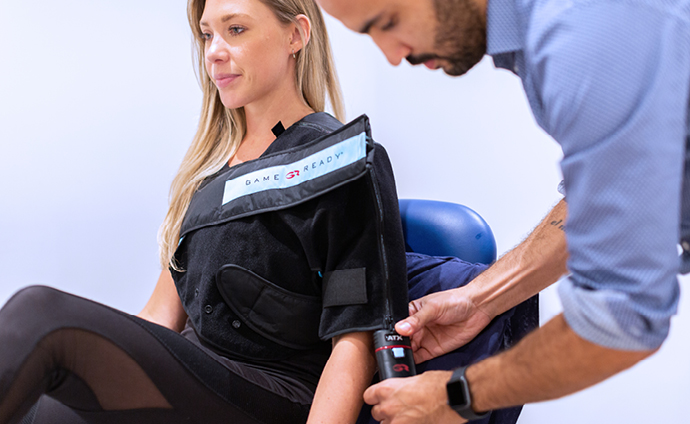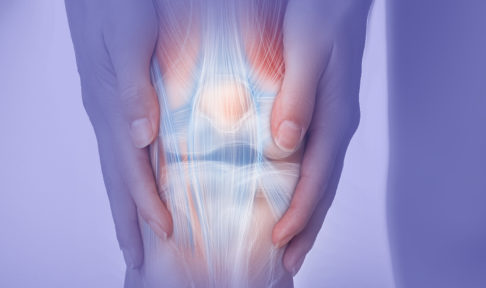Rotator cuff injuries are the cause of around 70% of shoulder issues in the UK, making them the most common type of shoulder disorder on record. However they are often confused with shoulder impingement, another extremely common shoulder issue.
An injured shoulder may be due to one of these conditions, or a combination of both. In some scenarios, a patient that doesn’t seek treatment and is suffering from one will compensate with movements or postures that actually cause the other to occur.
Here we’ll break down the three key differences (or in some case similarities) between the two.
1. The possible causes
Shoulder impingement has three main causes: either overdoing a repetitive movement, poor posture or genetics.
The repetitive movement could be related to a sport that has a lot of repetitive, overhead rotations like swimming or something else in your lifestyle, such as a job involving physical labour.
Poor posture, either sitting or in general, is something a physio can help you identify and overcome through a variety of measures, depending on what the precise issue with your posture is.
And if it’s genetics, such as an unusually shaped shoulder blade or abnormalities in bone structure, that is the hardest one to completely cure. However it can be managed with a variety of treatments, which we will touch on a bit later.
Rotator cuff injuries do have some crossover in causes with shoulder impingement (the repetitive movements or poor posture), but there are also some causes that are more likely to be exclusive to rotator cuff injuries.
A rotator cuff injury can be caused by a heavy fall or overloading the joint by lifting something really heavy. In some cases, degeneration or general wear and tear over time can also lead to a rotator cuff injury, which is seen particularly often in elderly patients.

2. The symptoms
This is where it gets a bit tricky and why you need a thorough assessment from a qualified physio to determine exactly what the cause of your shoulder pain is. The symptoms for both shoulder impingement and rotator cuff injuries are very, very similar!
Shoulder pain and weakness are the most telling signs of shoulder impingement and rotator cuff injuries. With both, it’s common to feel pain in the front of your shoulder, which then may then be referred down the side of your arm. Same with lifting your arms overhead, putting pressure on your shoulder when lying in bed, or reaching behind your back.
However, if you actually tear your rotator cuff, you may experience an acute pain at the time of the injury occurring, almost like a snapping sensation and you will immediately notice that your arm has gone weak.
Arm weakness can also be a symptom of both shoulder impingement and rotator cuff injuries, but the more extreme the weakness, the more likely it will be a torn rotator cuff tendon than shoulder impingement, or even another injury like referred nerve pain.
3. The treatments
Treatment for any condition at Spectrum will always be based on a thorough assessment and a discussion about what happened in the lead up to the pain before devising a personalised treatment plan for you.
There are a few treatments at Spectrum that we might use for both shoulder impingement and a rotator cuff injuries, including:
Taping
Kinesiology tape may be used on both types of injuries, given its suitability for shoulder injuries. K-tape is flexible, yet still able to guide your movement and help to speed up the healing process. For patients suffering from a more acute pain or tear, we might do rigid taping instead to help offload the shoulder.
The GameReady unit works to reduce shoulder inflammation much faster than normal icing or compression can, which is crucial for recovering from impingement but also useful when it comes to reducing the pain caused by rotator cuff injuries.
Dry Needling is an extremely effective treatment for pain and stiffness caused by both impingement and rotator cuff injuries as it helps to reduce tension and tightness in the area, which in turn leads to less pain and more mobility.
TENS is an electrical nerve stimulation technology that works to increase movement and flexibility of an injured area, while minimising pain. For this reason it can be useful when treating both shoulder impingement and rotator cuff injuries, especially if weakness or movement restriction is present.
While the differences in treatments may not be vast, in some specific cases of shoulder impingement Shockwave is often an appropriate treatment, but rarely for rotator cuff injuries, except with very specific symptoms and presentation.
Strengthening the rotator cuff tendon through a range of exercises may also be one of the most effective ways to regain strength and speed up your recovery. In contrast, with impingement there is more focus on reducing inflammation and creating space in your shoulder capsule than strengthening tendons.
Time to tackle your shoulder pain? Book an assessment with one of our qualified physios and you’ll have a personalised treatment plan devised to suit your body and injury specifically.



